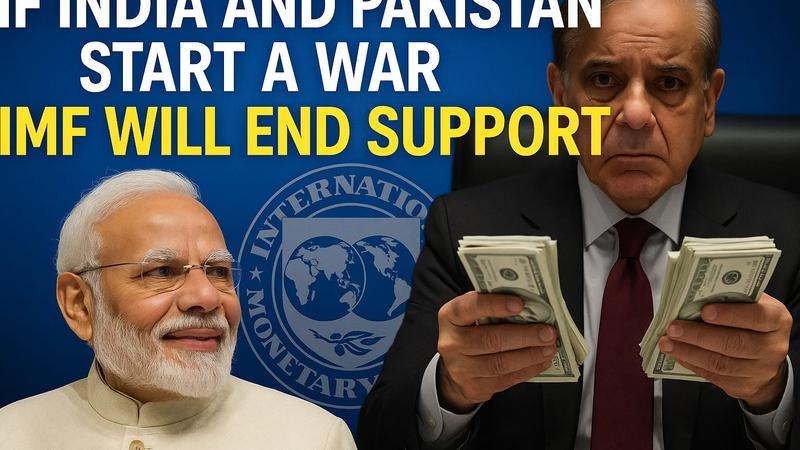If India and Pakistan start a War then IMF will end support

In a stark warning that underscores the precarious state of Pakistan’s economy, the International Monetary Fund (IMF) has reportedly imposed 11 new conditions for its next tranche of funding, raising serious concerns over Islamabad’s ability to stabilize its financial position. Among the conditions, one particularly controversial clause links continued IMF support to regional stability—essentially warning that renewed conflict with India could jeopardize the already fragile bailout package.
IMF Conditions
This development lays bare the underlying vulnerability of Pakistan’s external finances. With foreign reserves standing at approximately $16.7 billion—barely enough to cover two months of imports—Pakistan faces a looming repayment obligation of $19 billion by 2026. By contrast, neighboring India’s foreign exchange reserves have surged by $4.5 billion in just one week, reaching a record $690.6 billion, positioning it to potentially surpass $700 billion by the end of this year. If this trend continues, India could emerge as the world’s third-largest holder of foreign reserves, overtaking Singapore by late 2026.
Foreign Exchange Reserve Rankings
Pakistan's Shrinking Options
Pakistan’s traditional sources of financial lifelines—China, Saudi Arabia, and the IMF—are showing signs of fatigue. China, once a generous lender through the Belt and Road Initiative (BRI), is now more cautious following debt restructuring headaches in countries like Sri Lanka and Zambia. Saudi Arabia, facing its own domestic economic recalibrations, has scaled back discretionary lending. The IMF, meanwhile, has made it clear that further assistance hinges on deep structural reforms, including steep cuts in fiscal deficits and energy subsidies.
The United States, which continues to exert considerable influence over IMF decisions, remains the last major pillar holding up Pakistan’s economic structure. Despite diminishing strategic returns, Washington appears reluctant to let Pakistan slide into complete insolvency, potentially due to legacy security interests in South Asia and the broader Islamic world.
India's Opportunity and Strategic Positioning
While Islamabad grapples with debt and dwindling credibility, New Delhi finds itself at a historic economic juncture. With steady reserve accumulation, robust exports, and resilient macroeconomic fundamentals, India is poised not just to insulate itself from global shocks, but also to enhance its strategic leverage in South Asia.
A brief recent flare-up along the border served as an inadvertent stress test: India’s reserves rose during the tension, while Pakistan’s reliance on external assurances became more apparent. Military posturing, which has long been Pakistan’s diplomatic currency, now comes at a high economic cost—one that the IMF and other international observers are no longer willing to overlook.
Behind the scenes, Pakistan’s military establishment continues to dominate its civilian institutions, often portraying itself as the guardian against “external threats.” However, this narrative is beginning to wear thin among an increasingly disillusioned population facing fuel shortages, soaring inflation, and eroding purchasing power.
A Slow-Motion Crisis
If current trajectories hold, Pakistan may avoid a full-blown default—but just barely. Stopgap bailouts and politically charged diplomacy may keep the country afloat in the short term. However, long-term sustainability remains elusive. With the IMF now openly dictating aspects of Pakistan’s budget and fiscal policy, including tax reforms and energy pricing, sovereignty itself has become a bargaining chip.
The risk of default carries broader geopolitical implications. Economic collapse could spark unrest, deepen poverty, and fuel radicalization—a scenario few in Washington, Beijing, or Riyadh would like to see materialize. And yet, the continued financial lifeline extended to Pakistan increasingly looks less like support and more like strategic containment.
Conclusion
Pakistan’s economic future appears trapped in a cycle of dependency, political opacity, and missed opportunities. India, by contrast, is stepping confidently onto the world stage, backed by solid financials and increasing geopolitical relevance.
While a formal default might not be imminent, the trajectory is unmistakable. Unless Pakistan undertakes deep and painful reforms—ones that go beyond cosmetic changes—it risks not just economic stagnation, but long-term decline. For now, its survival hinges less on domestic resilience and more on the patience of international benefactors.